CTIA 2007
Mar 30, 2007, 12:33 PM by Eric Lin, Eric Zeman, and Rich Brome
Our on-the-scene report from the CTIA trade show in Orlando. New phones from Sony Ericsson, Kyocera, Helio, HTC, Alcatel, Motorola and Pantech.
Part 1
LG
It won't be long before you can buy at least one new phone from LG. The VX8700 is on its way to Verizon and should be available late next month. The 8700 is the first of the Shine series to come to the US, and it is pretty. Like most metal phones, it exudes quality. The weight and solidity are noticeable, but it is not too heavy.
LG has been paying alot more attention to detail and the shine really shows it. Not just the finish of the metal pieces or the way the external display fades into the surface of the phone, but also working details, like the hinge. The VX8700 has one of those hinges people rave about - if they're into that sort of thing - it feels smooth and solid. Plus it's a back opening hinge like on Apple laptops, so it looks good too since the ugly parts are out of sight.
The cut metal keypad is nearly flat - there are no ridges between keys or any other visible indicators that seperate one key from another. Yet it is very easy to dial or text with on the 8700 and i suspect that it wouldn't take long before you could do it without even looking.
There is also a new brushed metal look to the Verizon menus on this phone, at first blush you might think it's to match the brush metal exterior, but it is similar to the ones on the VCAST TV models. It appears as though Verizon has decided to use this style across all their new devices.
The 570 is still under development but the unit we got to try was the final size and shape. The square shape and circular external music controls certainly bear more than a passing similarity to the Fusic, however the 570 is much less, well, square. It is much thinner than the Fusic and the sides are completely rounded instead of flat. Between the round sides and the elimination of that nasty external antenna, the 570 sits in your hand very comfortably.
The keypad felt almost as good as the Fusic's, which we liked quite well when we reviewed it, but like the Fusic and the 8700 it is almost totally flat.
Though the software on the phone wasn't final, it had clear Sprint branding, even though Sprint hasn't officially acknowledged the phone. That's not a surprise considering the design and features, but it's nice when our suspicions are confirmed.
We were shocked that LG, who usually announces an avalanche of phones at every show only announced two. However they've promised us that more are coming. This summer we expect to see a Chocolate II, which will most likely come to Verizon as well, however that is not definite. It is not known what form factor it will take, whether it will be like the slider currently available in Korea and Europe or something more American like a clamshell.
Sony Ericsson
Sony Ericsson released just two phones for the US market at CTIA Wireless this week. While there was no word on which carriers will distribute the two phones, they are both slated for GSM carriers and pack features into designs that are easy on the eyes. The first is another entry in the popular Walkman series of phones, the W580. The second, the Z750, is an HSDPA clamshell that is a US variant of the Z610.
The W580 was definitely the star of the show for Sony Ericsson. The slider form factor is fairly thin (14 mm), lightweight and pleasing to look at. It comes with the bright orange accents that are part of the Walkman series signature and comes in two colors, though we only saw the white version at CTIA. When you pop up the slider, you are faced with an orange keypad, which is a nice touch visually. The keys were a little funky, though. The action was minimal and there was very little feedback to let you know you had activated the button, We'd go so far as to say that the quality seemed a little iffy, but that could be because we looked at it at the end of the day and the W580 had seen its fair share of action. The rep was unable to comment on whether the model we saw was a production phone or not.
The phone feels good in your hand, well-balanced, and solid. The action of the slider is smooth and it opened and shut without effort. The function keys on the top part of the slider all worked well and there was a reasonable amount of feedback from them. The D-pad felt a little weird. The silver ring of the D-pad has concentric ridges on it, so your thumb feels some texture when it moves over the D-pad. Also, the play/pause button in the center of the D-pad is raised and there's a small gap between the button and the inner part of the D-pad. This felt a little weird under your thumb. The screen was very bright and sharp and did a good job of displaying colors accurately.
The main user interface was similar to other Sony Ericsson phones. While using it, however, we stumbled onto a second, vastly different user interface. Rather than the 9 colored, animated 3D icons on the screen, there were "artistic renditions" of the icons in white over a black background. The selector indicator was a floating set of "bars" (think your old screen saver with the lines that travel and morph across your PC screen). The lines of this indicator system were rainbow colors and floated to each selection. It was pretty, for lack of a better word, artistic. The icons reminded us of the UI on the LG Prada phone. The drawback of the "artistic" UI is that it was a bit slow to react to your input on the D-pad. The lines really did float across the screen to the next icon, and took their time doing it.
Looking at the specs of the phone, it is very similar to the oh-so-similarly-named W850 slider for Europe. The 2 megapixel camera is in line with SE's other offerings and the W580 comes with the Walkman Player 2.0 application as well as fitness software, picture blogging and full html browser. It has a quadband GSM/EDGE radio, stereo bluetooth and an RDS-FM radio. It also comes loaded with 3D games from Electronic Arts so you can get yoru game on while rocking out to tunes.
Speaking of which, the music player sounded good. There was a reasonable selection of sample songs on the model we listened to. They employed top of the line Bose headphones and with them, the phone sounded really good, with rich, warm sound that wasn't thin or tinny sounding. It will ship with headphones and a 512 Mb microSD card.
Sony Ericsson's other phone for the US market is the Z750, which is a US-banded version of the Z610i. This Z750 is Sony Ericsson's first HSDPA phone for the North American market. It is tri-band HSDPA and quad-band EDGE clamshell that strives to make a fashion statement with its very smooth exterior skin.
The 750 is a very light phone. With the phone closed, the smooth finish feels good in yours hands. There are no edges that stick into your palm. It comes in pink and gray colors. The exterior display is hidden behind a mirror of sorts. When you hit the side buttons, the monochrome display lights up underneath the mirror. The effect is pretty cool. It was easily readable in the dark. We didn't get to look at it under direct sunlight conditions, but we can't imagine it will be very visible outside.
Opening is actually a bit of a let down, considering how stylized the outside is. The interior is a bland gray finish with no accents or coloration to make it more attractive. Still, the keypad was very usable and we had no complaints about how the D-pad worked and interacted with the menu systems, which are similar to other Sony Ericsson phones.
Aside from the HSDPA 3G connectivity, another feature setting this phone apart is that it is the first Sony Ericsson to support true push email service. It can be tied to an Exchange ActiveSync server to receive and send emails, as well as other Java-based email programs from third parties. The email in-box was below the SMS in-box in the 750 menu system. While the email UI wasn't very robust, it was perfectly serviceable in composing short emails, though the standard keypad kept us from typing too much.
The 750 has on-screen widgets that will stay in touch with any number of different wireless services and provide you with updates on things like stocks, weather and sports. The widgets were enjoyable to interact with. They will remain active even when the phone is in standby mode, so whenever you open it, the information is always up to date. This same interface can also display RSS feeds from your favorite sites.
The 750 also has features similar to the rest of Sony Ericsson's line, including a 2 megapixel camera and media player. The 750 is a good balance between style and oveall functionality. It has a solid feature list and the 3G radio will go a long way to help with its web and email applications.
Kyocera
Remember how high school football coaches would say something like "we're not re-building, just re-loading" when their team was having an off-season? Well it took Kyocera a few years but they're coming back with guns blazing. The company has taken their popularity at the entry-level and embraced it. They're showing off a line of phones that are entry level, but don't look like knock-offs.
These are still entry-level phones, so they're not made of expensive materials and they don't high end features, but they're solid, interesting, and thanks to new software, they're pretty easy to use too.
Take everything you think about the Strobe and throw it out before judging Kyocera's second attempt at a messaging phone. The M1000 isn't going to win any beauty contests - it's just a simple metallic colored rectangle, like a mini-V. (The color is impossible to describe - is it bronze? pewter? tarnished silver? No one could say.) But it's an improvement over the gimmicky looks of the Strobe.
But the big improvement is not its looks, but how it works. Both the internal and external screens are bigger and are now TFT so they're much brighter. The QWERTY keyboard inside the clamshell is shockingly good. It is split down the middle with a D-pad and huge space bar between the left and right sides. The keys are nearly silent but they have this great click feel to them, and they are spaced just far enough apart that it's easy to touch type. It's honestly better than keyboards on some much more expensive smartphones.
And when you are holding it to type, that's when you notice the back. The sides curve around into this large pad of dimpled rubber, which creates a comfortable, non-slip surface to hold the M1000 by.
The E5000 is the other Kyocera everyone will talk about. It has one of the most unique hinges we've seen on a phone in the US. The top half attaches to the left of the hinge, and the bottom to the right, so the phone creates an S shape when open. When closed the E5000 is an curvy organic blob of silvery plastic. When open, the inside is all black.
There are external touch-sensitive music controls below a color screen, and a flat, but usable keypad inside paired with a large, sharp screen as well. It also packs a surprising number of features including EV-DO, stereo Bluetooth and a 1.3 Megapixel camera.
The E2000 has the same features as the E5000 but in a more mundane shell. It is an all-black rectangle with curved, rubbery edges, but smooth on the top and bottom. Like LG's 8700, the E2000 has a backward facing hinge that was solid and easy to flip open with one hand thanks to the shape of the phone's sides.
The keypad is made of large square keys that sit edge to edge. At the top there is a large square D-pad with a raised center select key. While the keypad was usable, the D-pad was pretty disappointing. It was stiff and unresponsive.
Unfortunately, the E1000 we got to play with was a very early build, which it would be unfair to judge. It's most notable feature is sides that curve in towards the center of the phone instead of towards the outside edges to make the phone easier to open with one hand. However we found the E2000 significantly easier to whip open one handed.
Kyocera also showed off the S1000, a low-end model for prepaid carriers. Like the FONE, the S1000 features a black and white interface with simplified features. We found it easier to use than the FONE, however, as the interface was less gimmicky. It uses a standard monochrome LCD, but has a color wallpaper behind it like the external display on the LG C1500 or C2000.
These Kyoceras only have company-assigned model numbers now, but as carriers announce them, they will most likely be given names.
Kyocera was also showing off an EV-DO Rev. A Express Card. Users of Kyocera's original EV-DO PC card will attest that it was often faster and more reliable than cards from other manufacturers, and Kyocera has told us to expect the same sort of performance this time around. The card has hidden LEDs by the antenna that will light up to indicate signal strength. This should help you figure out where the best spot is in your favorite cafe for good data coverage.
Part 2
Ocean
Helio CEO Sky Dayton said that the Ocean is the phone he was dreaming up before he even started Helio. Not all of us can be so lucky to see our dream phone become reality, but Helio is hoping Sky's dreams are pretty close to yours.
When you first pick up the Ocean, it's probably not going to be as small or as light as you think - maybe just because Helio's last two phones were so small and light. It's significantly more pocket-friendly than the Sidekick - it is smaller and lighter - but no one will call it tiny.
Helio has eschewed the trend towards shinier and shinier devices, coating the front and back in matte black rubberized finish. Rounded sides and edges further make Ocean feel small and like the coating, make you just want to grab the phone in your hand.
It takes about 3 seconds before you figure out how the slide works. If you're holding the Ocean in your hand like you would a regular phone, pushing the screen up reveals the numeric keypad beneath. When you're holding it sideways, pushing up on the sides of the Ocean reveals the keyboard beneath.
The QWERTY keyboard is only a 3 row keyboard, which means that the space bar is included in the bottom row of keys, however the arrangement was not difficult to use. Helio includes a dedicated key for the @ symbol on the keyboard, a clear homage to the SideKick heritage of its designer.
Because the Ocean works in both portrait and landscape mode, all of the software has been redesigned to work both ways. In landscape mode, there are more shortcuts in the main menu to take advantage of the additional buttons (there are four soft keys on the Ocean's face), elsewhere applications will display information differently depending on what mode the phone is in.
Helio has updated three of its main applications for the Ocean, mostly to make the most of the new keyboard. There are also new features in a few other applications like the camera. Even though the Ocean is not technically a smartphone, since it doesn't run an independent, open operating system, it sure acts like one.
The new messaging application has probably undergone the most radical change. Not only does it include text and MMS, but it also includes access to every major email and IM service including AIM, Yahoo!, Live and Gmail. The messaging application can also sync with your own mail accounts including ones on Exchange servers.
The contacts application has been redesigned and re-written. You can now sync from a variety of sources other than My Helio including Yahoo! address book as well as Exchange servers. The address book features a new contact card view, as well as showing whether your contacts are on IM in the contact list.
The browser can be used to surf WAP or HTML websites without Helio trying any fancy tricks back at their servers like they've done with past phones. The browser just surfs to the site and displays it pretty accurately - just like on Windows Mobile or on the new S60 web application. It also features a single column view and mini-map like a smartphone browser. But the Ocean has even more tricks up its sleeve. When browsing in desktop view, you can zoom the whole web page in or out, and it redraws almost instantly. You can also just choose to browse through the images on a page - if you're looking for a new wallpaper or other picture.
There are other welcome improvements like the ability to instantly upload pictures you take to a new photo sharing site and tag with with keywords or even your GPS location. As well as the ability to surf while playing music in addition to text messaging. Though we're still a bit sad that you can't do absolutely everything while listening to your tunes. But then, Sky was sad about that too, so who knows, maybe that will be in his next dream phone.
In the meantime, the Ocean isn't just something most people will "make do" with, it's something that the people who got to see it seem to be falling in love with.
Helio was only showing the Ocean by invitation behind closed doors, much the same way Apple has showed off the iPhone. Which led us to draw an interesting parallel between the two. They each are only being shown to a limited number of people. They each have a unique feature set that really appeals to regular people and not just phone geeks. And they each were the talk of the show they were shown at (CES and CTIA), even though neither was actually shown on the floor of that show.
HTC
HTC was hyping their new line of micro-laptops at CTIA, although it's hard to classify them as "phones", so we'll leave coverage of those devices to the general gadget sites.
Though there was no press release or major announcement, HTC also quietly took the wraps off a new pair of CDMA Windows Mobile devices with sliding QWERTY keyboards. These are extremely similar to GSM models already announced or shipping, simply for CDMA networks.
The S720 is very similar to the S710 that was announced a month ago and we covered in our 3GSM article. This is a new form factor designed to provide full functionality in both one- and two-handed scenarios.
The two devices are very similar. The S720 is slightly wider and taller than the S710, a difference that is exaggerated by a blockier shape. The two phones are a similar thickness on the bottom half, but the S710 has a bulge at the top that the S710 does not, making the S720 slightly thinner on average.
The S720 has a great set of keys on the front, including function keys that are thankfully not fingerprint-collecting chrome like on the S710. The assisted slide mechanism feels great.
The S720's big brother is the P4000, which will probably be called something else when it reaches the US.
The P4000 is essentially a CDMA version of the 8525 currently offered by Cingular. Since it's a newer device, though, it improves a little on the GSM version with a considerably thinner profile and an assisted slide.
The P4000 for Telus has an unfortunate d-pad that feels cheap and is tricky to use, but HTC often changes such things on versions for different carriers, so we hope the US version(s) will improve in that area.
Here are some side-by-side photos for size comparison:
Both the S720 and P4000 will ship as standard EVDO devices, although they can be upgraded to support EVDO Rev. A, if carriers choose to offer such an upgrade. The S720 will ship with Windows Mobile 6. The P4000 will have the older version 5 at first, although it is upgradeable.
HTC is going after the US market aggressively these days. They claim to have captured about 20% of the smartphone market in the US in 2006. To grow that even more in 2007, this year they plan to do a better job addressing the CDMA market with more timely model updates.
Alcatel
Every trade show season, there's a new company trying to make a big new push into the US market. In past years, it's been companies such as BenQ, Innostream, Telson, and Haier. This year it's Alcatel. The US market is a tough nut to crack, though. None of those companies had much luck here. The big US carriers have traditionally stuck to the big boys like Nokia and Motorola. A new carrier often had to start with smaller carriers and prove themselves there before working their way up the ladder.
Things are bit different these days, though. In a world where Nokia and Sony Ericsson seem to be stumbling a bit with the big carriers, some opportunities have opened up for new phone makers to court the first tier carriers. Pantech is a good example, having leaped into Cingular's lineup quickly and seemingly successfully (based on what they're showing off here.) Alcatel seems to be aiming to follow in Pantech's footsteps.
Alcatel used to be a French phone maker, but they had some trouble a few years ago, and decided to form a joint venture with TCL, a major Chinese phone manufacturer. The "new" Alcatel (think of it like Ericsson becoming Sony Ericsson, without the name change) is based in Hong Kong.
When they started the joint venture, Alcatel and TCL decided to start more or less from scratch. Their first lineup of phones a couple of years ago consisted entirely of ultra-basic, ultra-cheap models. The following year they added cameras, and finally this year they are bringing out some basic music phones. It's all about baby steps.
They plan to continue adding more features and moving toward higher-end phones, but their overall strategy focuses on style and price.
Their very large lineup can be grouped in a few simple ways. First, there are three categories: basic, camera, and music phones. Within each of those, there are two form factors: clamshell, and either bar or slider. Then each of those models also has two style variants: one that's aggressively styled, and one with a more conservative design. Many models also have color and pattern variants.
There are far too many potential models to show them all here, but below are a few that caught our eye:
The C701 (above) is toward the high end of the lineup, featuring a camera, music player with external controls, microSD memory card slot, and stereo Bluetooth. (All of Alcatel's Bluetooth phones rock out in stereo.) It also has a gorgeous sculpted shape with a great soft-touch finish in a bright orange color. Most of the keys feel great, although the d-pad could use some tweaking. The OLED outer display is bright and nifty-looking, if a little small. One really nice touch is the oversize covers for the memory card slot and USB port. They're light years easier to manipulate than the tiny slivers of rubber on most phones.
The C707 (above) is almost the same exact phone, just with a different style on the front featuring one of several graphic designs.
The C285 represents the top of the current lineup, with all the features of the C701, plus a higher-res display (176 x 220) and a 1.3 megapixel camera. It's also a good example of how Alcatel does the slider thing:
The phone generally feels good. It has a faux-leather finish, if that's your thing. It does have one unfortunate usability flaw: the location of the music keys just below the display means you'll constantly find yourself hitting rewind or fast-forward when you mean to hit the left or right soft key.
The E801 and E805 are examples of bar-style phones from the company:
Both have microSD memory card slots for music, and the E805 is interesting in that it supports TrustedFlash.
Alcatel claims to have several phones in testing with Cingular now, with the first launching as early as May if all goes well. Of course not all models will be picked up by carriers like Cingular, or even ship in the US at all. The large lineup Alcatel is showing here at CTIA is just what they're pitching to carriers.
Interestingly, while some other new manufacturers have been willing to surrender their brand and let the carrier's logo be the only branding on the phone, Alcatel is insisting that its phones be Alcatel-branded from the start.
Alcatel also hopes to enter the US CDMA market in the future, although that's far easier said than done.
more LG
The elephant in the room, er... booth at LG this year was the mysterious "LG575" prominently displayed right at the booth entrance. With plain-as-day AT&T branding, it's not hard to guess what type of phone this is, but actual features were a mystery, since it wasn't officially being announced or talked about.
We did overhear booth reps clearly saying it will launch in two-three months. That's about all we know other than what you can see in the photos. If we had to guess, we would say this will launch at the "CU575".
Also on display was this Windows Mobile WiMAX phone:
This particular model is for Korea, but it seems relevant with Sprint launching WiMAX soon. Sprint told us here at CTIA to expect high-end WiMAX devices before we see WiMAX in regular phones, so perhaps this is a glimpse of what to expect from Sprint in the future.
LG also had this in their booth:
...which we've heard some people mistake for a "Windows Mobile Prada phone". However, if you look closely, you can see that the smooth black shell is actually a plain hand-made plastic cover, hiding the real device design underneath.
Part 3
Motorola
Motorola must have been burning the midnight oil in the months and weeks leading up to the onslaught of recent major trade shows. CES and 3GSM saw plenty of new handsets from Moto, and they unveiled yet another slew of phones bound for the US market this week at CTIA. They ranged from higher-end feature phones to very basic phones. While we were disappointed that there were no major breakthrough products, Motorola announced a mix of CDMA and GSM phones. Let's start at the top and work our way down, shall we?
The MotoRAZR maxx Ve is Motorola's new music-playing clamshell bound for Verizon. It comes with EV-DO for data, stereo Bluetooth and a 2-megapixel camera with autofocus.* (Moto's first 2 MP cam for Verizon). Looking at it, it's certainly a purty addition to the RAZR line, but trades the brushed metal surfaces for a high-gloss plastic exterior on the face. This glossy finish seems to be the exterior-du-jour for phone makers these days, and as with all of them, the smudge factor is extremely high. After handling it on the show floor, we definitely felt like we needed to run to the nearest bathroom and wash our hands.
The back of the maxx Ve has a nice textured paint finish, giving you that "grippy" feeling when you hold it in your hand. There are raised, silver Motorola and Verizon logos on the back, which are somewhat of a classy touch. It feels very light. Trading the metal finish for plastic has definitely reduced the weight a bit. The front of the maxx Ve also has the touch-capacitance buttons to control the music player. When a call comes in, two strips along either side of the front of the phone light up, alerting you to a call if you have it in silent mode. There are the standard volume and speakerphone keys along the side, as well as an external microSD slot.
Opening it up, it has that RAZR-style keypad, which provides a fair amount of feedback when using it. It was definitely the best keypad of the new batch of phones, and did a good job of using the etched metal surface to make it easy to type out messages and numbers. It's hampered a bit by the Verizon interface, but is perfectly serviceable in finding and using the applications and services you are interested in.
The camera is interesting. Opening the phone, you see a small button thing on the hinge. When the camera is active, this button allows you to focus, save and send pictures. The autofocus took about 2 seconds to do its thing before you could actually take the picture. You can also set it so the large-ish front display becomes the viewfinder so you can add yourself to pictures. The video recorder functions similarly, and with a 2 GB microSD card, the maxx Ve can record up to one hour (yes, a full hour!) of video, rather than the 15-second snippets that many phones limit you to.
The music player is similar to that of other Verizon-branded phones.* The screen is very nice, sharp and bright.
The ROKR Z6m is a CDMA version of the RIZR Z6 that was announced at CES. Because it is music-centric, they have decided to rename it ROKR. Not quite sure where Moto is going with this branding ideology, but it's a solid CDMA mid-level feature phone. Also supporting EV-DO, stereo Bluetooth and 2GB worth of tunes, it has a full 3.5mm headphone jack and the same slider form factor as the Z6. The Z6m has a high-gloss exterior on the front, with the D-pad and function keys positioned at the bottom. The back of the Z6m has the same type of textured feel as the Ve, and stays in your hand well. The slider mechanism felt finished and firm. There's a little ledge just above the D-pad that catches your thumb and is very convenient to assist in opening and shutting the phone. The D-pad itself provided good feedback and clicked nicely as you used it to navigate the BREW interface.
With the Z6m open, the keypad is yet another offshoot of the etched metal keypad like the RAZR. This keypad was definitely a step down from the Ve in terms of quality. It felt just a hair cheaper and the entire keypad itself moved around a bit. This could be that the Z6m is very first phone you can put your hands on in the Motorola booth, and it probably got a lot of use over the course of the week. Of course, the keypad could also just be a bit cheaper, too. The screen was very good, tough. It displayed colors accurately and was nice and crisp.
The music player is a simple affair, and can be accessed easily with the controls. One interesting thing is that the Z6m does not support Windows digital rights management, so an songs in your library that have Windows DRM will not be compatible with the phone. Otherwise it plays most major file formats. There was also an actual sliding keypad locking button on the side of the phone so users can manually lock the keypad and prevent accidental interaction with the phone. The GSM variant of the Z6 does not have this feature. It also has a 2-megapixel camera. No carrier announcements have been set, and neither has a price point.
The Motorola i876 is an iDEN phone is somewhat unique in that it's another attempt to sexify the iDEN handsets. We can't say that "espresso" brown is all that sexy, but its slimmer profile goes a long way to reduce the bulk factor. It has a smooth finish, and the paint scheme has flecks, or "grinds" that give it some visual texture and just a wee bit of sparkle. One interesting thing is that it uses a Linux-Java platform, and Motorola said it will be moving more of its phones to a Linux-Java platform over the coming year.
There are buttons all around the outside of the phone to access different features and such, including volume toggles and the walkie-talkie keys. Opening it up is a bit of a disappointment. The keyboard is cheap feeling and the screen has much lower resolution than that of the Z6m and maxx Ve. There was lots of visible granularity and pixelization of the menus and icons on the screen. The D-pad is not a circle like other Moto phones, but a 4-way T-shaped key. While the keys were rounded and smooth, and felt natural under your thumbs, the overall experience of using the keypad was not all that enjoyable.
The i876 also has stereo Bluetooth, a 1.3 megapixel camera, a microSD slot and a large external display. It should hit streets in the 4th quarter.
The W355 (above) and W385 (below) are entry-level feature phones bound for CDMA carriers. They both feature KRZR-esque styling, with the same soft-textured backs. The W385 has a cheap plastic exterior and slimmer monochrome exterior display.
The W355 has a "spun" metal-looking cover on the front, and definitely is a step up from the W385 in terms of fit and finish. The keypads on both were very disappointing. The W385 had a rubberized keypad, and the function and D-pad buttons, er, nubs, were so small it felt like you were pressing down on a pimple, rather than a button. The feedback was not good, either. The W355 was slightly better, and was basically a plastic version of the RAZR-style keypad. Using plastics for the keypad greatly reduces the cool factor of its appearance. Both also come with pretty basic feature sets. They will use 1xRTT for data. The W385 has an FM radio and the W355 has Bluetooth. The W355 will also come in several colors, essentially blue, black and brown. No carriers announcements were made, and the Motorola reps said they will be compatible with all US CDMA carriers.
Lastly, there were the GSM-based W380 (above) and W395 (below). These two phones are very basic entry-level phones bound for US MVNOs. They also are cheaper takes on the KRZR design, with much lower end materials. They are both very slim and light, and have the same textured paint has the W355 and W385. The W380 has a VGA camera, and a slim exterior monochrome display that basically only tells you what your battery power is, what your coverage is, and whether or not you have any messages. The keypad and materials where the cheapest of the bunch. Though the keypad had a reasonable amount of feedback, the materials were much lower in quality than any of the other handsets from Motorola.
The W395 is a little bit of a step up and offers a 1.3 megapixel camera, a microSD slot a larger, full-color exterior display and slightly better keyboard materials and build. The keypad here was metal, rather than plastic, and but it didn't match the Z6m. The W395 will support GPRS data, and there is no exact word on which data standards the W380 will support. The W395 will be announced later this year, with availability expected in the early third quarter.
Also on display was the W360, a SLVR-like low-end GSM bar phone:
* Corrected April 9, 2007. The Ve does not have FM radio, and the music controls can be activated without opening the phone.
Pantech
It looks like this will finally be the year Pantech's plan comes to fruition. The company originally entered the US market with low-end phones, but did so in the hopes that they could bring higher-end devices to the States. Verizon recently launched the PN-820. This spring Helio will launch the Ocean, and later Cingular will launch the C710, giving the company a spot in many carriers' mid- to high-end. All four phones announced at CTIA this week are destined for AT&T (Cingular), so they are GSM-based.
The C710 is a slim, light clamshell with external stereo speakers and an external screen, but no external music controls, which struck us as odd. It is fairly rectangular shape with a subtle hinge at the top. Even though it lacks curves, the size and proportions prevent it from feeling uncomfortable when holding the phone either to text or talk.
Inside there is a large, crisp screen which reminds us of the phone on the Kyocera E5000.
The keypad is stylish and flat, but the numeric keys have a nice click to them, and it was easy to text on. The navigation keys were less impressive - the 2 soft keys are vertical shapes and are set too low so they don't really match up with the on-screen labels. The D-pad was a ring around a center select key with virtually no way to feel where the select key stopped and the directions started.
The C710 was scheduled to launch this summer as a 3G (WCDMA) handset, most likely when AT&T (Cingular) launches video sharing, since that feature is included here. However it may be delayed until fall to upgrade the radio to HSDPA.
The C600 is Pantech's other 3G phone for AT&T and will be limited to the slower WCDMA speeds. It is designed as an entry-level 3G model with very few features.
It is a surprisingly small and light clamshell, especially for a 3G phone. The hinge does not open all the way, only about 60 degrees, which makes looking at the screen while texting and using other phone features awkward. However this makes the C600 fit tight against the face when talking on the phone, a subtle feature which many people have been looking for.
Like the C710, the C600's D-pad is a ring with a center select key. Only because the phone is so small, the ring has been reduced to a very narrow surface - too narrow for me to hit accurately and i don't even have big American meat-hooks. The keypad it self is much more usable, however, with individual keys that are decently sized.
Because of the size, the C600's screen is also small, which seems odd for a 3G phone where data services and streaming media are such a selling point.
The C510 joins a few other new phones sporting a slightly thicker shape and a backwards facing hinge. After opening and closing so many of these new phones, it is clear this hinge design has a superior feel to it. It is so solid and confidence inspiring.
Outside it has a one-line OLED display and music keys. The display is too small and dim to be of any real use - especially when displaying track information. However the external music keys, which are real keys and not touch sensitive, feel great and are very responsive.
The C510 also has the best keypad of the new batch. The numbers are snappy and have a great click and the D-pad is easy to use. The screen is not that large, but the C510 is EDGE only, so size is not as important.
The C150 is an entry-level candybar that doesn't have much to offer. Instead of a D-pad it uses a joystick which is coated in rubber like a stick shift in an inexpensive car. although joysticks are not popular because they poke people through their pockets, they are very easy to use. This one was no exception.
Other than the C710, all these models are due out in the second quarter.
Samsung
Beyond the Upstage, which Sprint and Samsung make a big ado about on Monday, Samsung only released a basic clamshell for Verizon, dubbed the SCH-u540. The u540 is a simple affair. It's an EV-DO-enabled phone that also has a 1.3 megapixel camera, microSD for media storage, and stereo speakerphone. It has plain black and silver styling clues and the metal shell on the front and back has a hit of sparkles in it, which seems to be a new design trend in Samsung phones. The back of the phone has no markings of any kind. There is a standard-sized screen on the front and touch capacitance buttons for access to the music player.
On the left side of of the phone are where the volume keys are and a keyboard lock button. The keyboard lock button prevents the music keys from being activated when the phone is grabbed out of your pocket. The right side of the phone has the voice-command button. The phone has a medium weight, but because of the smooth metal casing, it has a bit of a slippery feel to it. It just sort of feels very vanilla-y. Nothing makes the in-hand experience stand out.
Opening it up, you'll see a big screen, which wasn't overly impressive in terms of quality, but it was bright. The standard Verizon UI was there, as was a Samsung skin that mirrored the Verizon UI, but had its own look and feel. It featured the same five selections across the top of the screen, but they were customized blue icons over a white background. The icons are all animated and do their little dance when you scroll over them. A nice improvement over the standard Verizon UI is that when scrolling up and down through the menu selections, the selection that is highlighted enlarges itself and the font becomes bold, and the other selections sort of grey themselves out.
The real standout feature of the phone was the keypad. It has a nice rubbery soft touch feel that is just pleasant to use. The keys are all large and easy to reach and use and they simply feel great under your thumbs. The click of each button was also good, not too harsh, not too click-y.
The camera UI was very usable. It was easy to adjust zoom and brightness on the fly while composing pictures, but anything more than that requires diving down into the options menu. The rest of the features were in line with Verizon's standard feature set, including the music player and video player.
The UbiCell is Samsung's femtocell product. Femtocells are essentially tiny base stations for your home. They work similarly to Wi-Fi hotspots in that you plug them into a broadband connection and it provides wireless coverage for your home. The one they announced at the show was unofficially slated to Sprint and should be available in late 2007. It overs enhanced voice and 1xRTT data coverage. They are trialling EV-DO Rev. A/C, and will upgrade the device if and when those trials are successfully completed.
The UbiCell can cover 5000 square feet, which is large enough to blanket most homes, plus a short distance outside the house, with coverage. The UbiCell self monitors and can tell if it is bumping into the larger main network and can scale itself down accordingly to avoid any interference issues.
The UbiCell will be offered through the carriers' retail channels. The users' phone numbers must be registered with the carrier at the time of purchase. This means friends and guests in your home - even ones use that same carrier - will not be able to access your UbiCell. While the UbiCell can support a long list of registered phones, we hear Sprint will be only be allowing four phones to be associated with each unit. Regardless of how the carrier configures it, only four users can access the UbiCell simultaneously. Calls will be automatically transferred to the main network once the cell phone ranges away from the house.
Once you get the UbiCell home, you can simply plug it into your broadband connection, follow some on-screen menus, and it will automatically configure itself to your carrier's network and provide voice and data coverage in your home. As offered by Sprint, the UbiCell will only work in your home. Other carriers may choose to enable the feature that lets you take the UbiCell with you to other locations to provide enhanced on-the-spot coverage.
Samsung is working on a WCDMA version of the UbiCell that will be trialled in 2008. The UbiCell does not provide Wi-Fi coverage. It will work with any broadband connection.
We also spotted the Samsung SGH-i600 (like the BlackJack but for Europe) in the booth, running a new home screen plugin that borrows UI elements from the next generation of Windows Mobile:
Comments
I was pretty impressed with the Z6m. The Z6 is a nice enough form factor, but I'm most psyched that they added the 3.5mm jack and key lock switch. Those a...
(continues)
Samsung SCH-R510l ???
Samsung's thin candybar for Alltel.
I didn't see it in any other sites' CTIA coverage. Who co...
(continues)
Rich, are you sure the Motorola maxx Ve has an FM radio?
http://direct.motorola.com/Hellomoto/nss/include/sup ... »
Thanks,
Eric
Where are the Motorolas?
C'mon Motorola...I know you have to have SOMETHING up your sleeves.....SPILL IT!
Kyocera
The prototype E1000 and E2000 feel pretty cheap, though. The keypads are especially bad. The keys are huge, but they're really loose and floppy. If they tighented them up, there wouldn't be any gap ...
(continues)
https://www.phonescoop.com/phones/phone.php?p=418 »
It looks almost just like the A630 one of the worst phones that I ever got for free. It was so bad that I tried to give it back the ...
(continues)
Can you read messages from the front of the VX-8700
VX8700!
FIRST OF THE SHINE SERIES TO COME TO THE US
FIRST OF THE SHINE SERIES TO COME TO THE US
FIRST OF THE SHINE SERIES TO COME TO THE US!!!!!!!!!!!!!!!!!!
hahahahaha!! Yes!
Slider type might come out later this year! YES!! 🙂


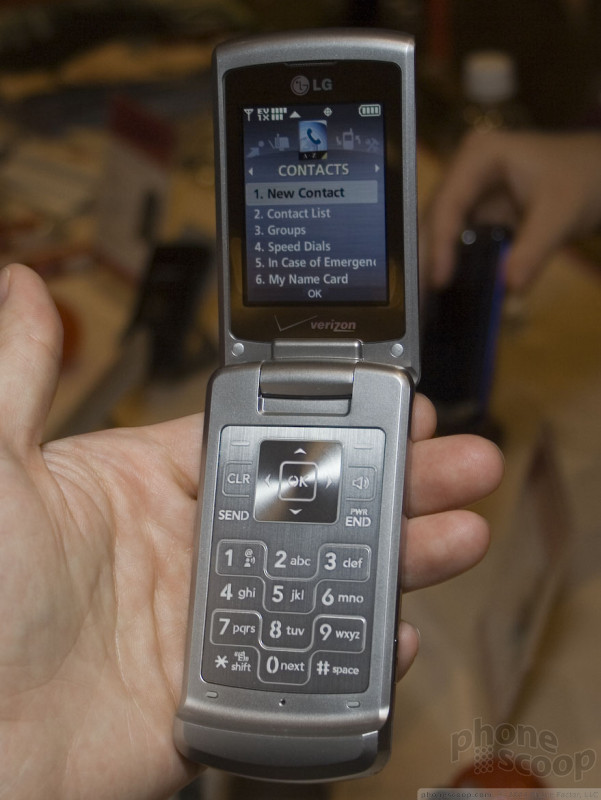






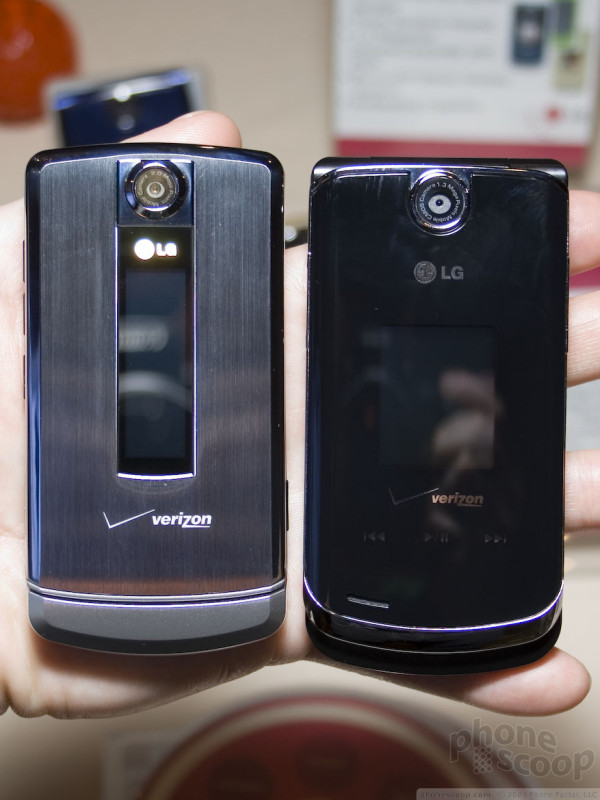


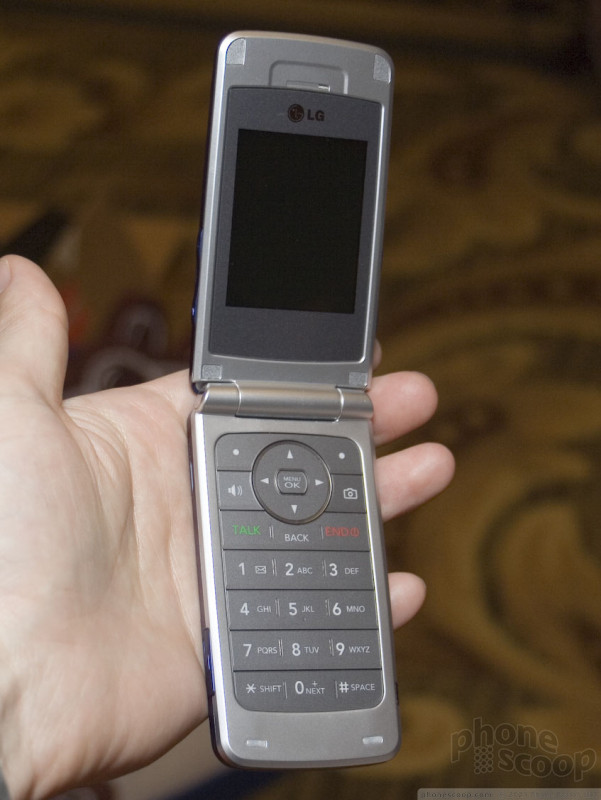





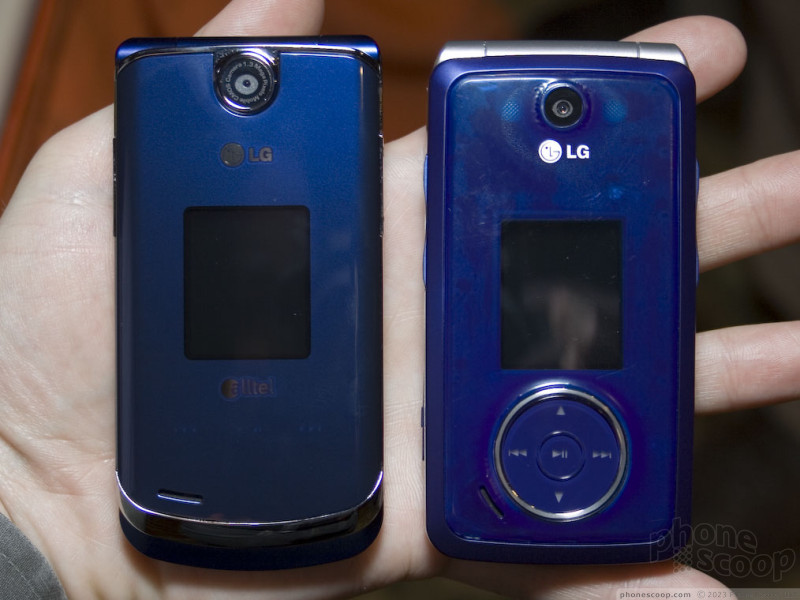


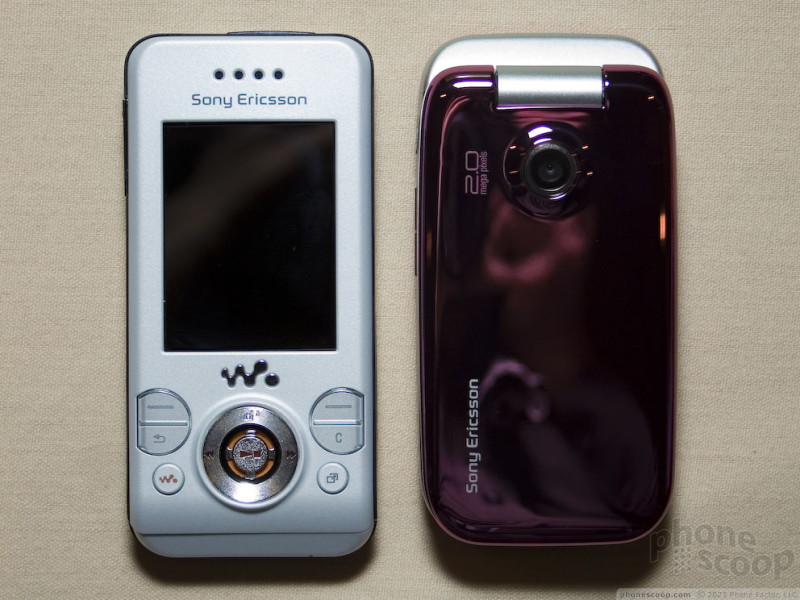


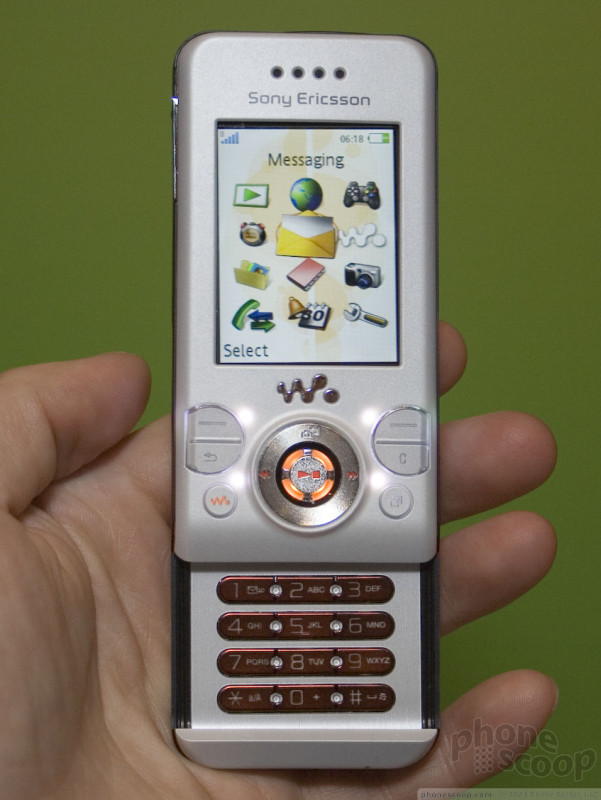








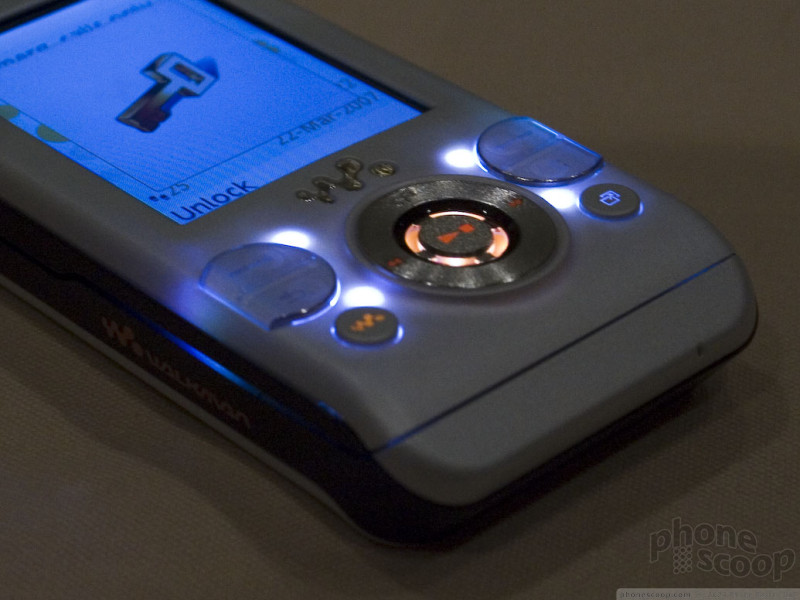




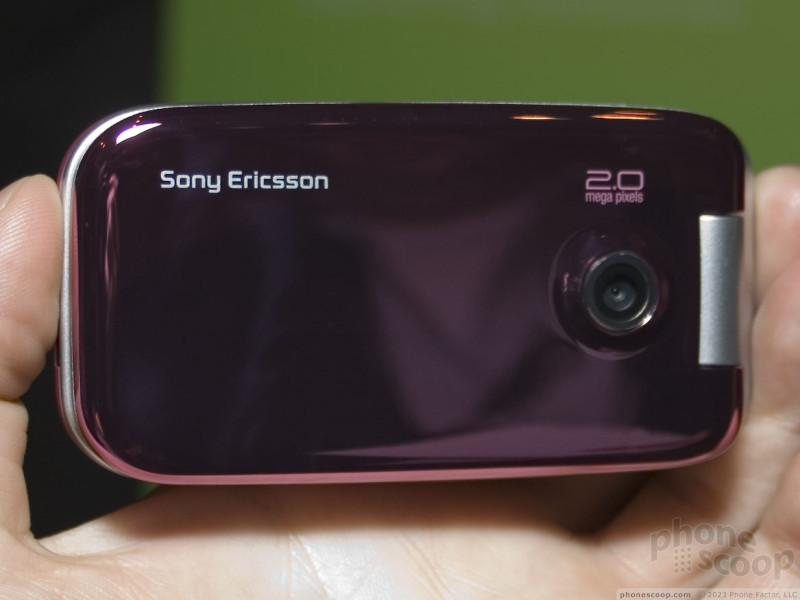







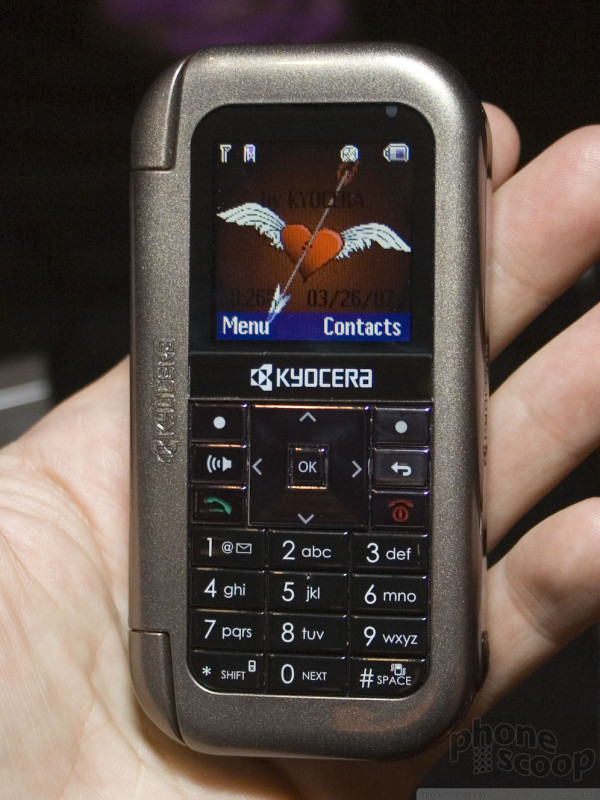





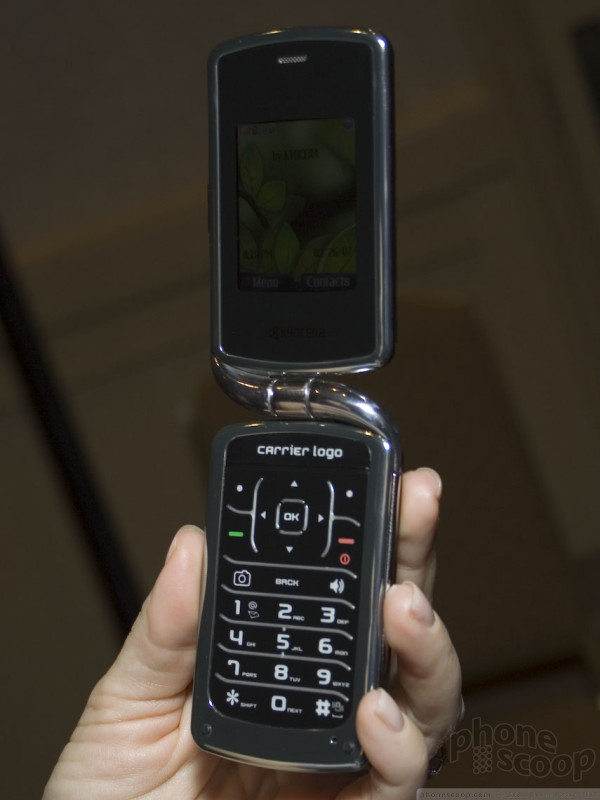








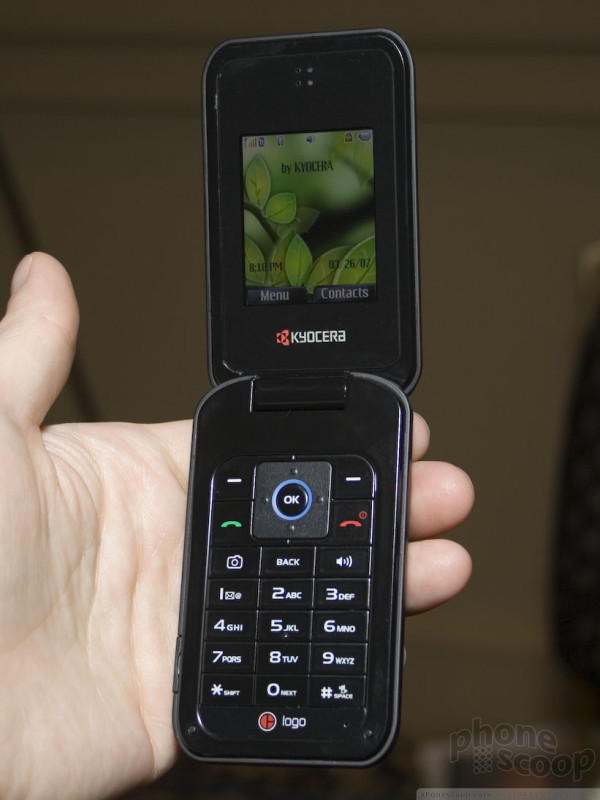




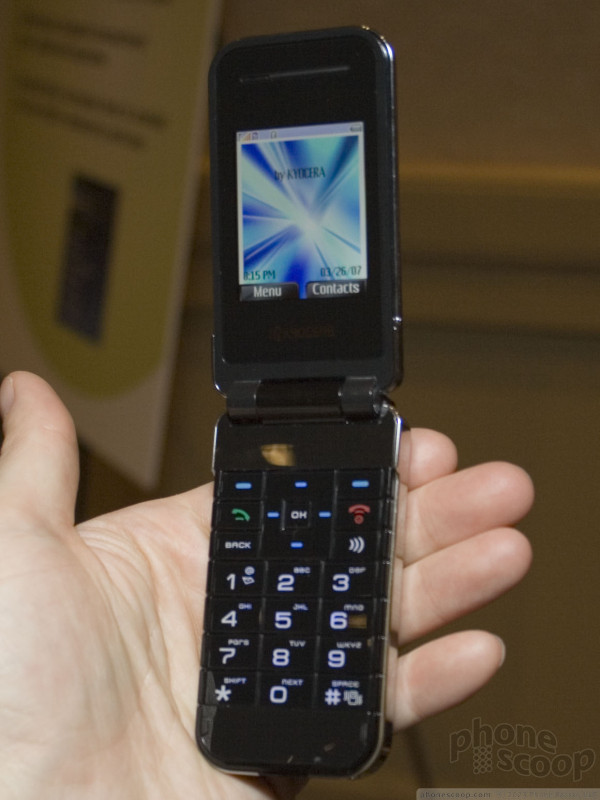



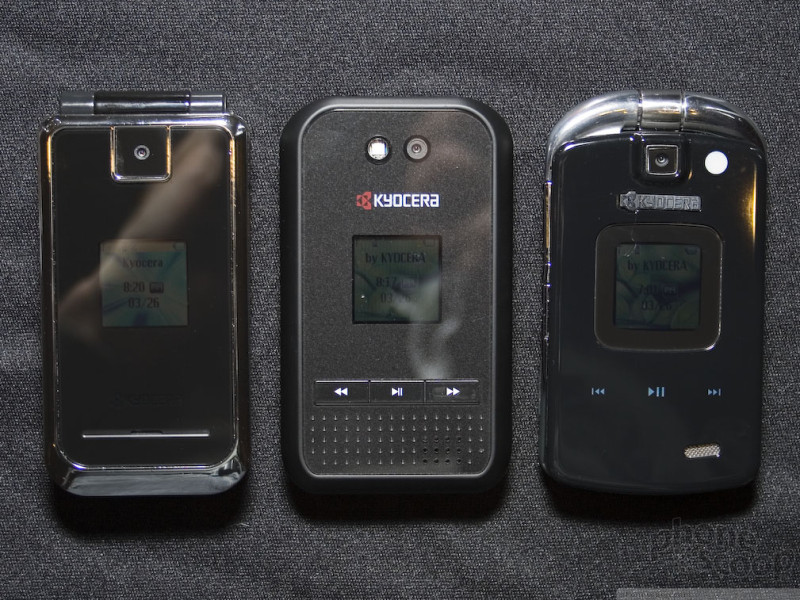


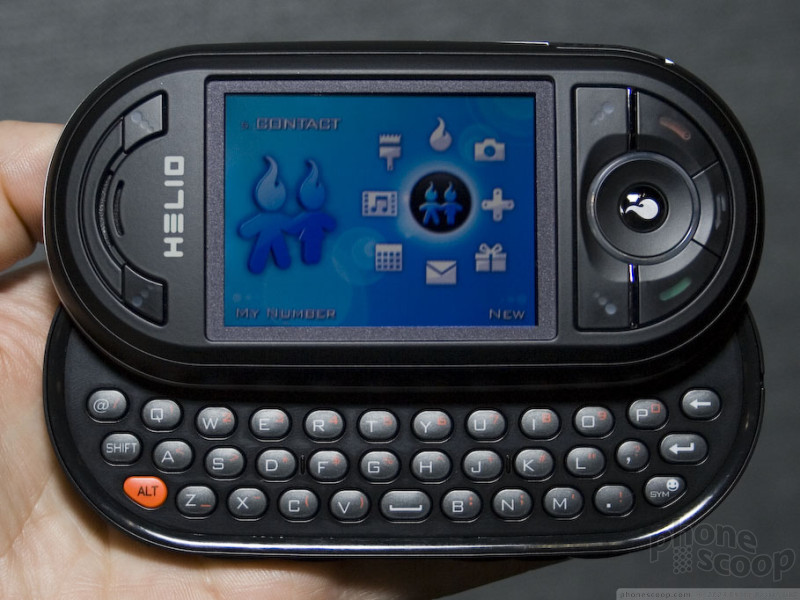










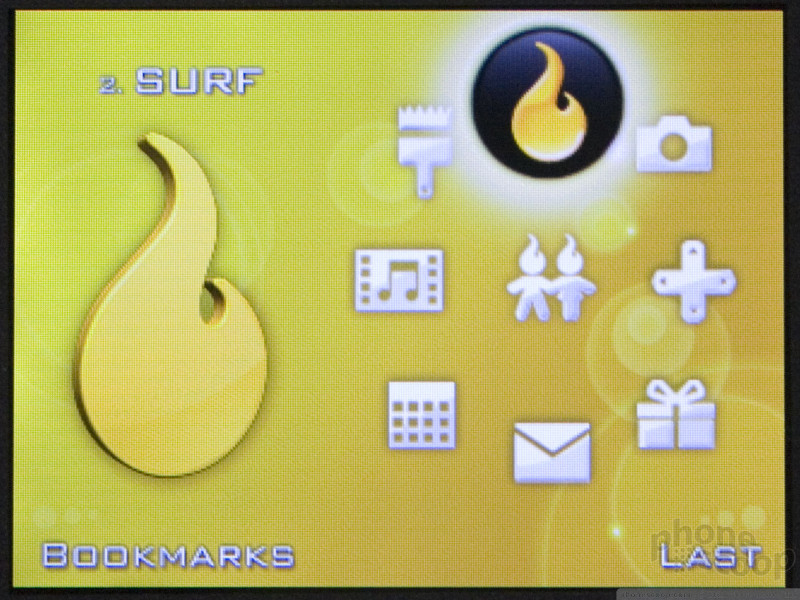











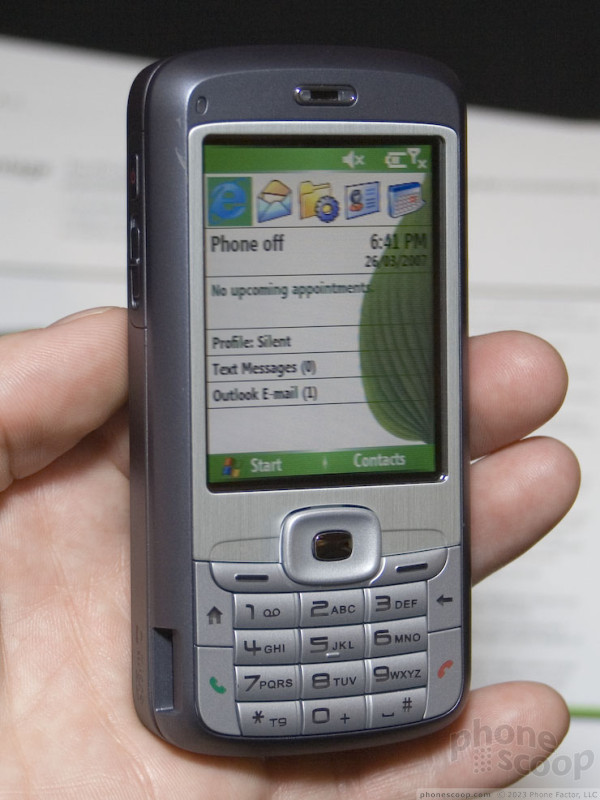








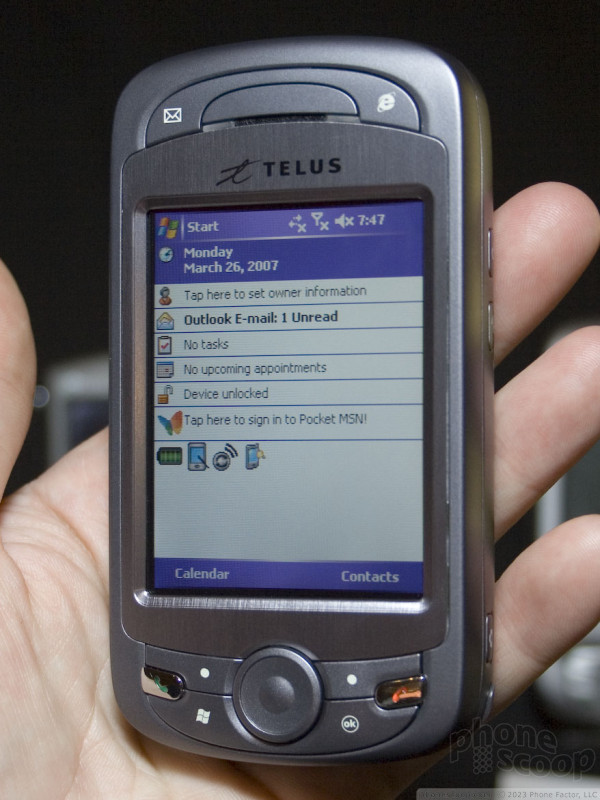







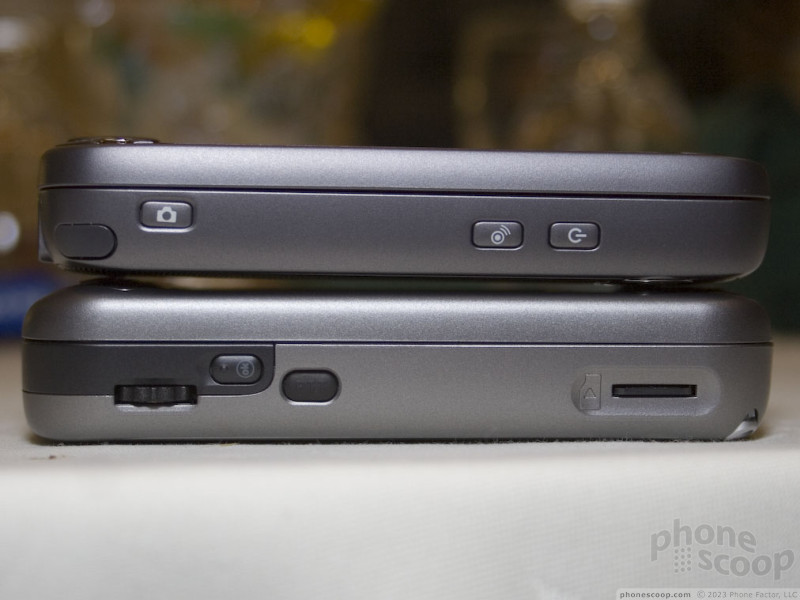







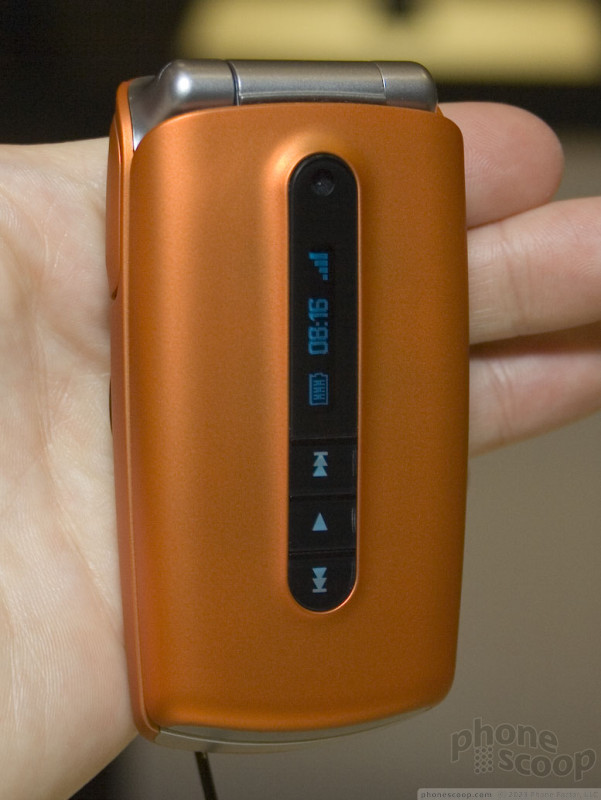






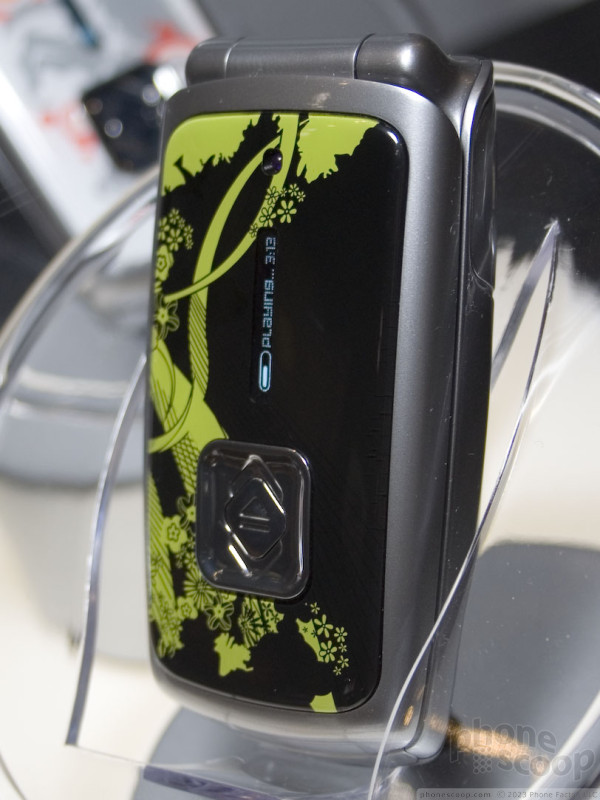



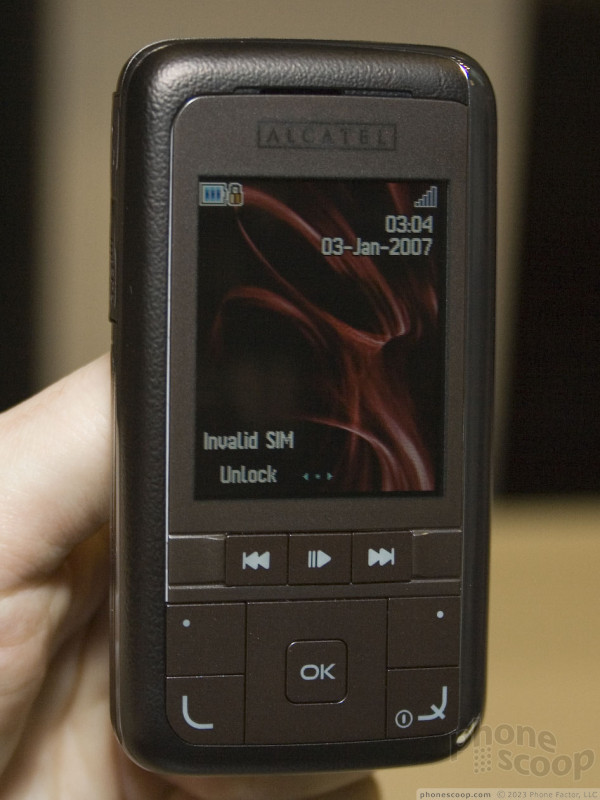




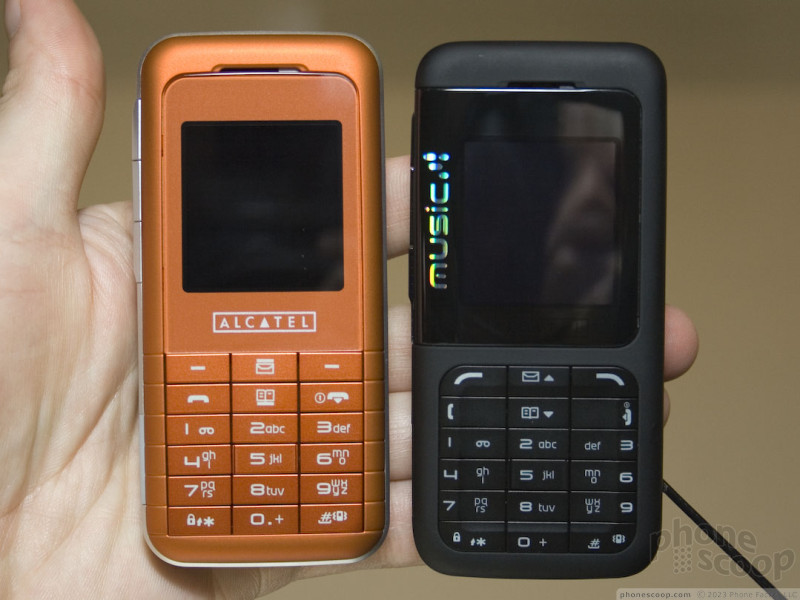


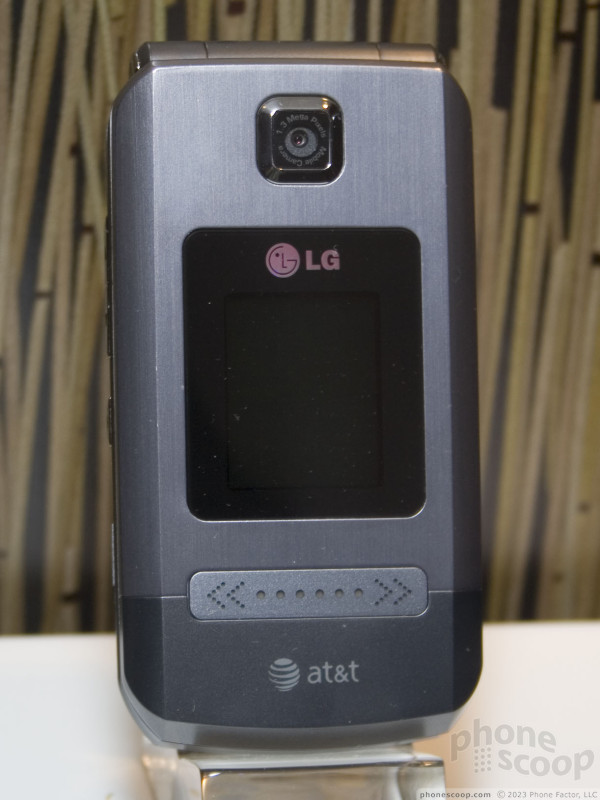





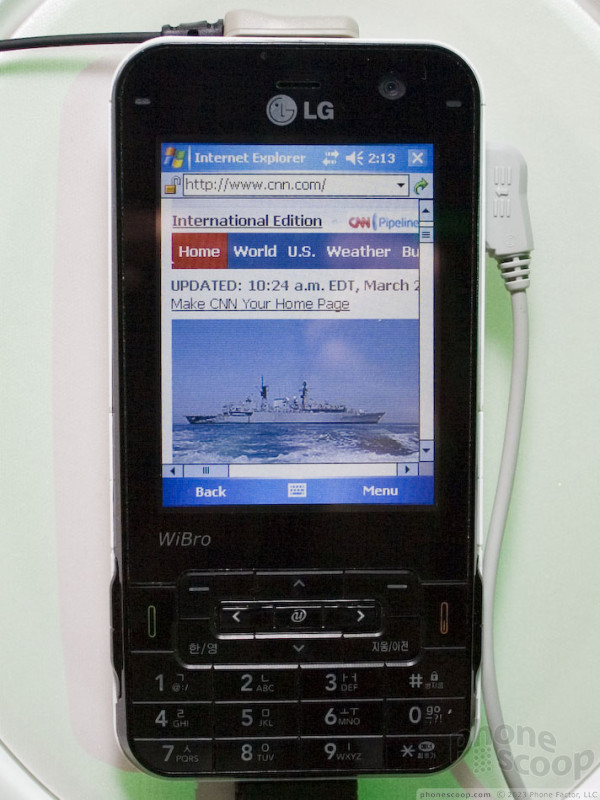


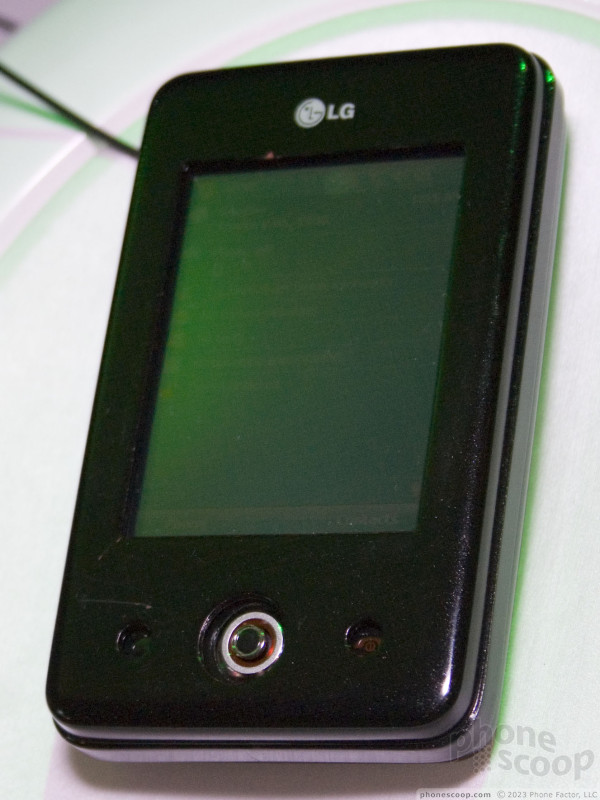



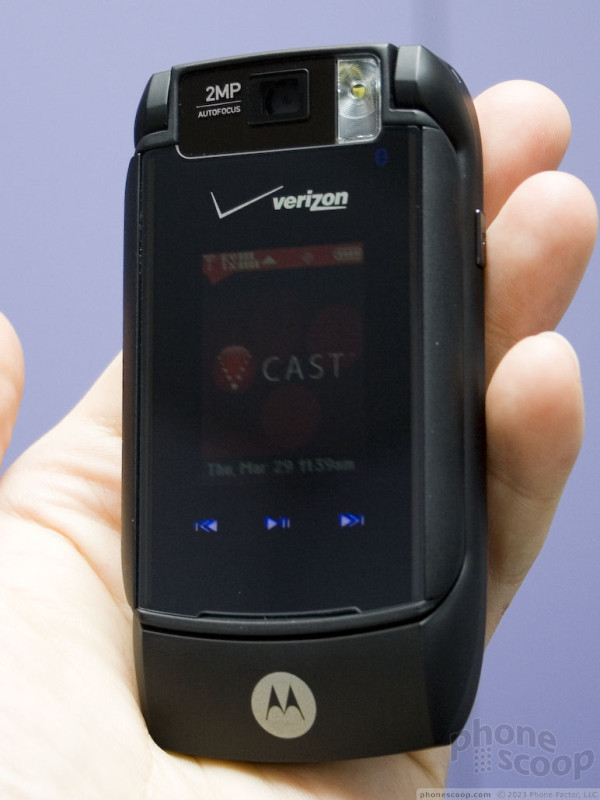







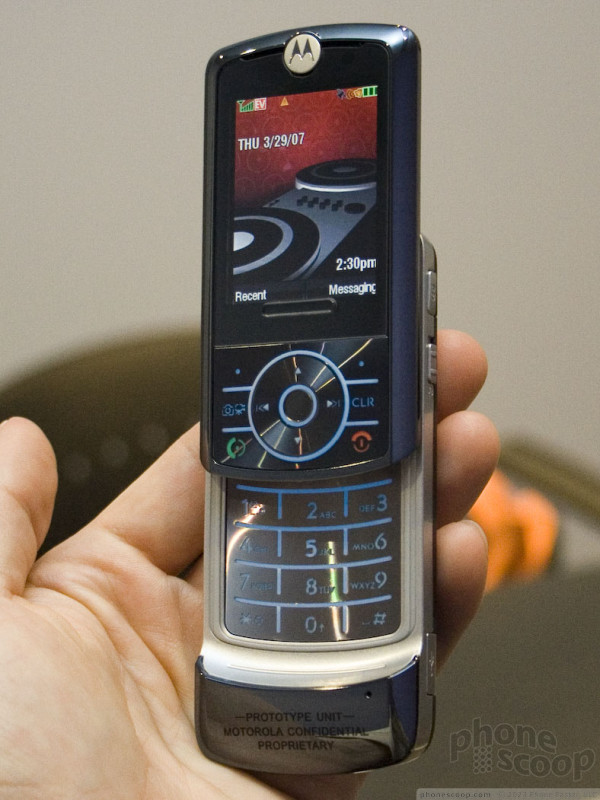







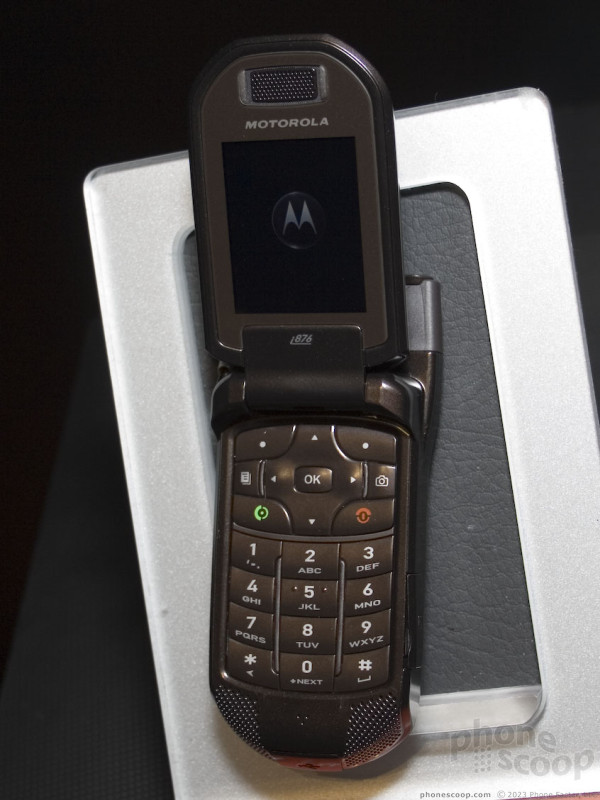






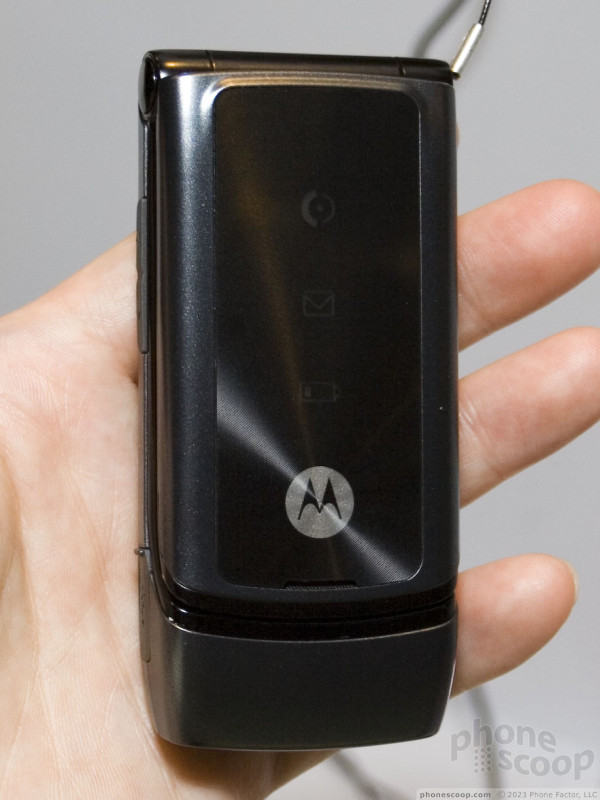





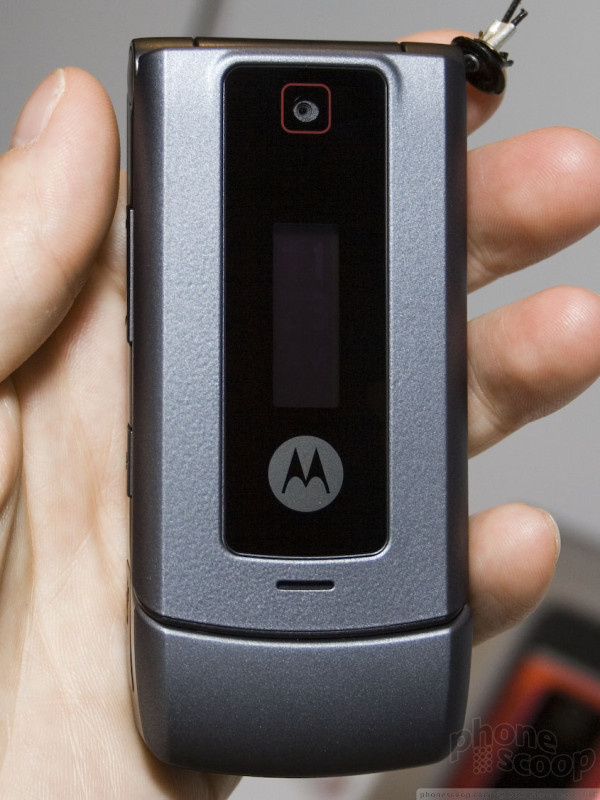



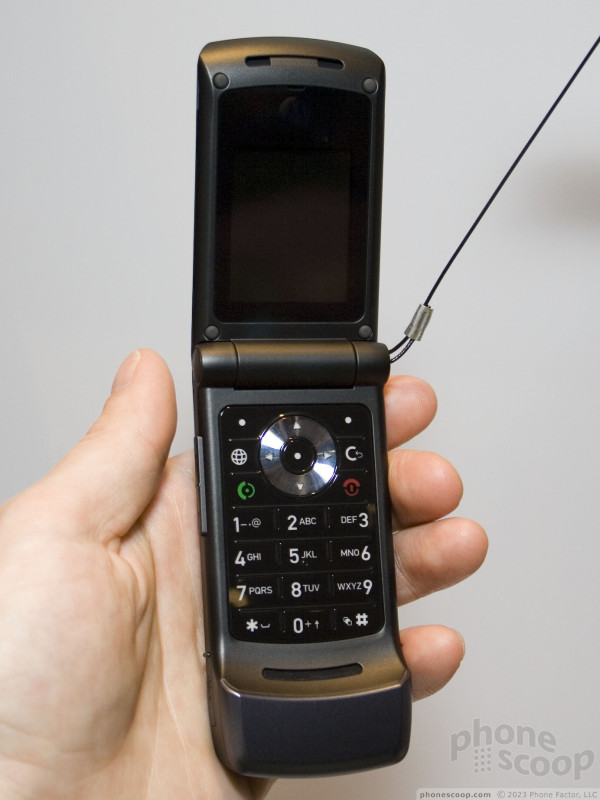






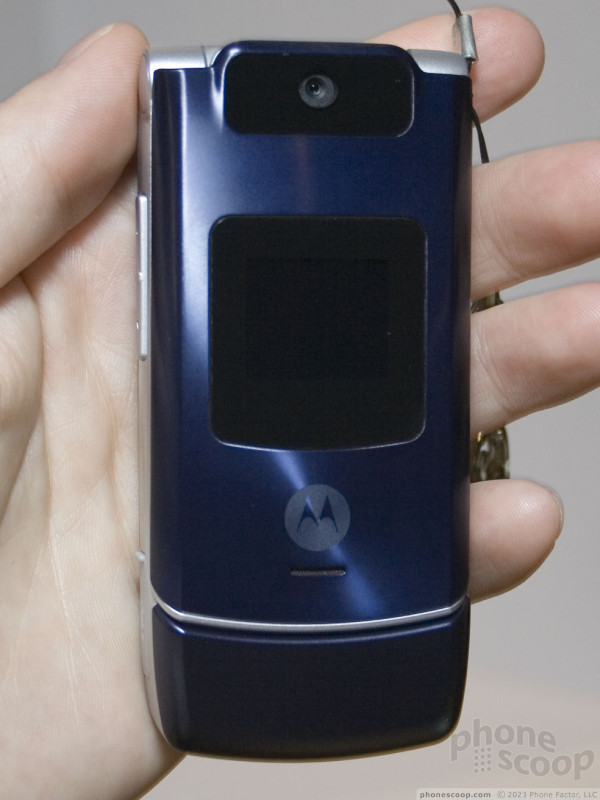



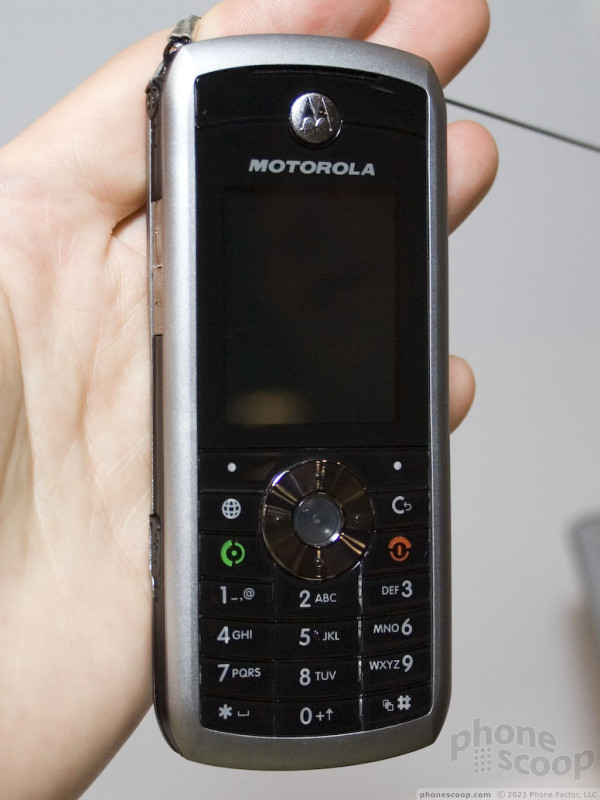



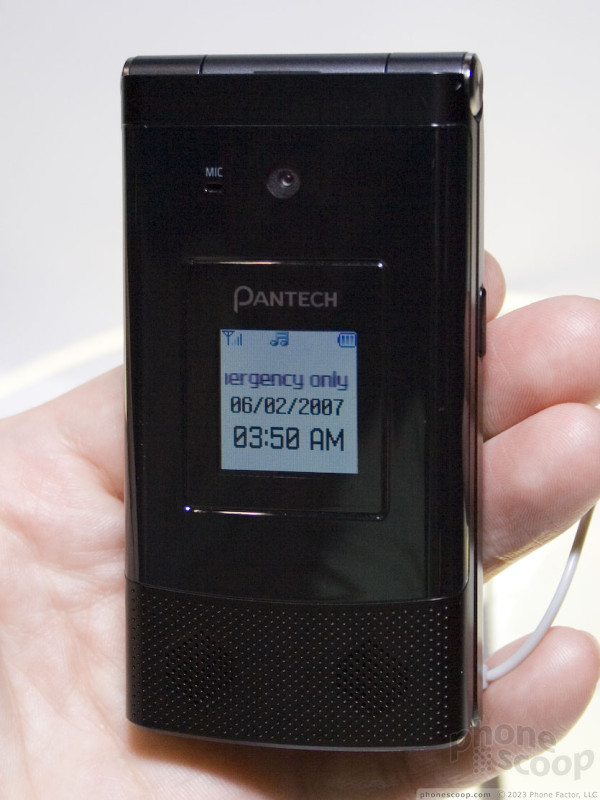








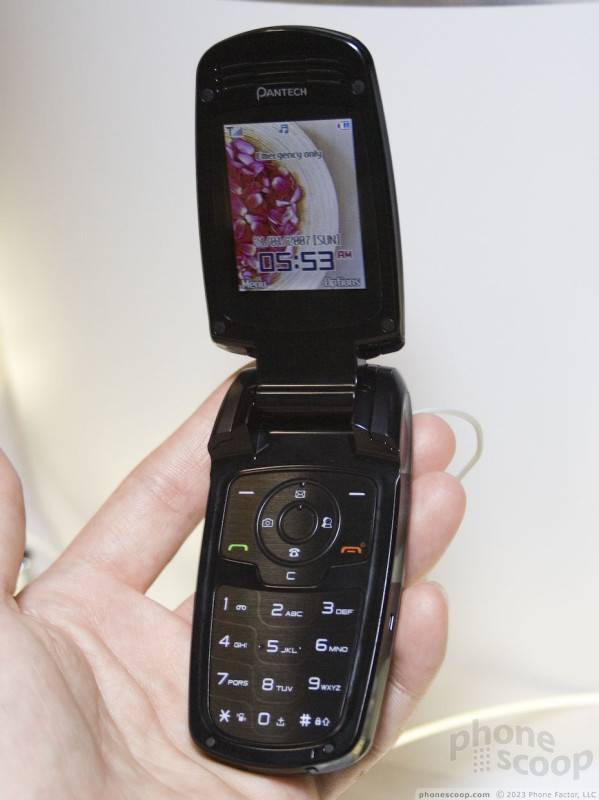



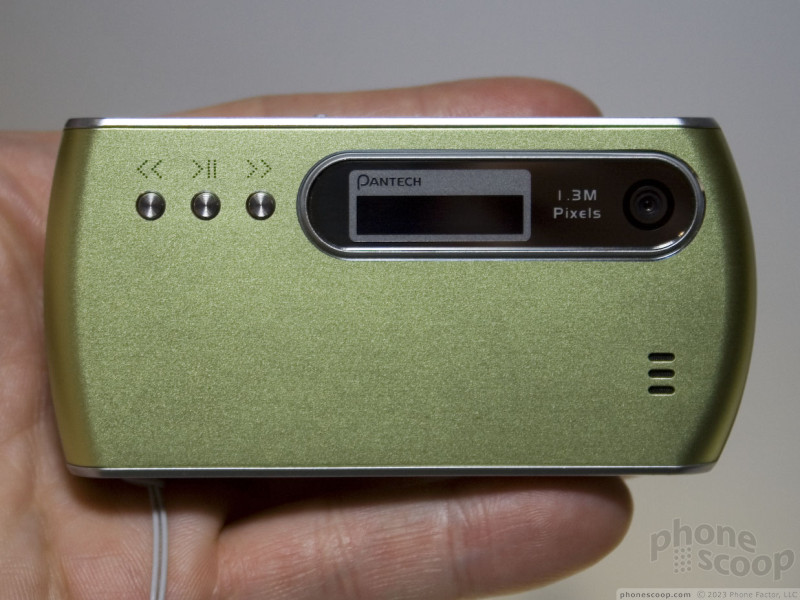



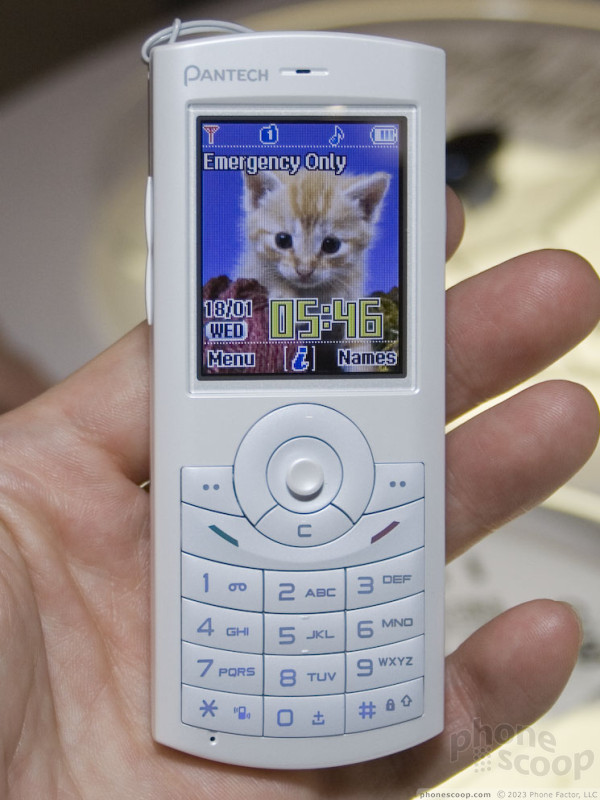



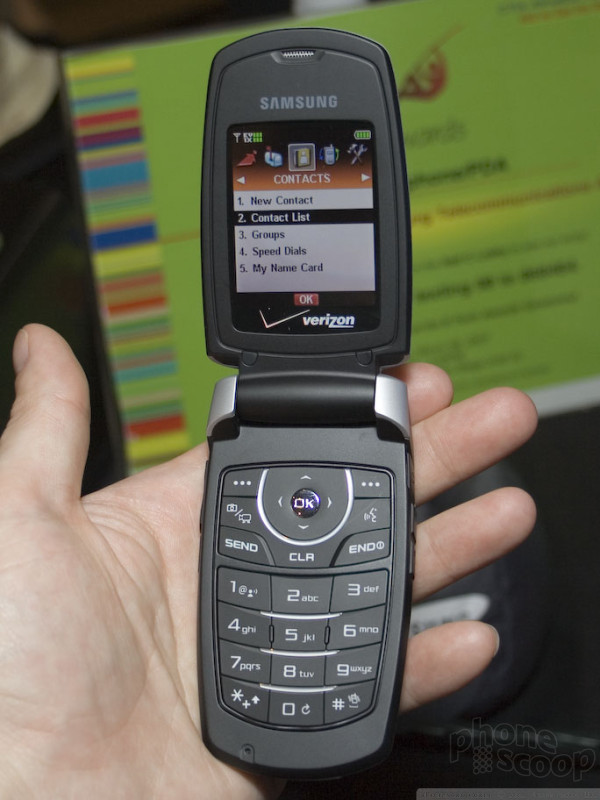



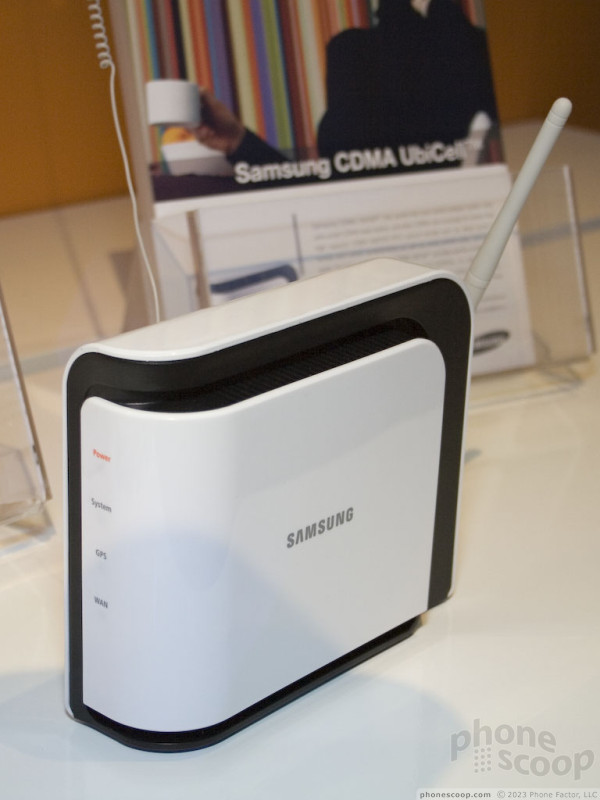



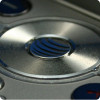 Review: Sony Ericsson Z750
Review: Sony Ericsson Z750
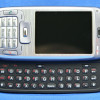 Review: HTC SMT-5800
Review: HTC SMT-5800
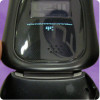 CTIA Fall 2007
CTIA Fall 2007
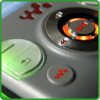 Review: Sony Ericsson W580i
Review: Sony Ericsson W580i
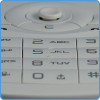 Video Tour: Pantech C150
Video Tour: Pantech C150
 Motorola RAZR maxx Ve
Motorola RAZR maxx Ve
 Pantech Ocean
Pantech Ocean
 Samsung SCH-U540
Samsung SCH-U540

